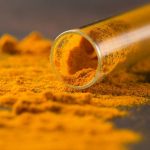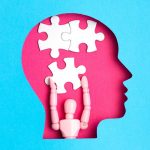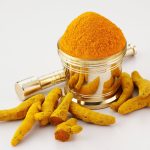Effective muscle recovery is a crucial yet often overlooked aspect of any fitness regimen. While many individuals focus on the intensity and frequency of their workouts, they frequently underestimate the importance of recovery in achieving their health goals. Understanding and implementing proper recovery strategies can significantly enhance your performance, reduce the risk of injury, and expedite your fitness progress.
Understanding Muscle Recovery
Muscle recovery refers to the process your muscles undergo to repair and grow stronger after being stressed during exercise. When you engage in physical activity, incredibly intense or prolonged exercise, your muscle tissues experience microscopic tears. Recovery is the body's natural mechanism to repair these tears, which leads to muscle growth and strength gains over time.
Several factors influence muscle recovery, including the intensity and duration of your workouts, overall health, nutrition, hydration, and sleep patterns. Essentially, the more intense and frequent your workouts, the more attention you need to pay to your recovery process.
The Role of Nutrition in Muscle Recovery
One of the most critical elements of muscle recovery is nutrition. After a workout, your muscles need essential nutrients to repair and grow. Protein is pivotal in this process as it provides the building blocks (amino acids) necessary for muscle repair. Consuming 20-40 grams of protein within 60 minutes post-workout can significantly enhance muscle recovery.
Equally important are carbohydrates, which replenish glycogen stores depleted during exercise. To effectively restore energy levels, aim for 45-90 grams of carbs post-workout. Hydration is another key factor; consuming 2-3 cups of fluid per pound of body weight lost during exercise helps maintain optimal hydration levels and supports overall recovery.
Certain supplements can provide additional benefits to whole foods. Creatine, tart cherry juice, glutamine, curcumin, and omega-3 fatty acids have shown promise in reducing inflammation and speeding up muscle recovery. Platforms like Elo Health offer tailored solutions for personalized nutrition advice and supplementation.
The Importance of Sleep
Sleep is often dubbed the ultimate recovery tool and for a good reason. During sleep, the body undergoes critical repair processes. The pituitary gland releases growth hormone, vital for tissue growth and muscle repair. Lack of sleep can impair recovery and negatively impact performance and overall health.
Research suggests that getting 7-9 hours of quality sleep each night is essential for optimal recovery. For those with rigorous training schedules, naps can also support recovery by providing additional rest and facilitating muscle repair. Addressing sleep hygiene practices, such as maintaining a consistent sleep schedule and creating a conducive sleep environment, can further enhance the quality of your sleep.
Active Recovery vs. Passive Recovery
Recovery can be categorized into active and passive methods. Active recovery involves engaging in low-intensity activities promoting blood flow and aiding muscle repair. Walking, swimming, cycling, or yoga are excellent for active recovery. These exercises help reduce muscle stiffness and soreness by keeping the blood circulating and delivering essential nutrients to the muscles.
On the other hand, passive recovery involves complete rest or minimal activity, allowing the body to recover without additional physical stress. Both types of recovery have their benefits, and incorporating a mix of active and passive recovery strategies can optimize overall recovery.
A study by the American Council on Exercise found that athletes who engaged in active recovery between interval training sets recovered faster than those who opted for passive recovery, highlighting the importance of continued movement at a reduced intensity.
Cold Water Immersion Therapy
Cold water immersion therapy, known as ice baths, is a popular recovery method among athletes. Immersing the body in cold water helps reduce inflammation and muscle soreness by constricting blood vessels and decreasing metabolic activity. This process helps flush out waste products, such as lactic acid, from the muscles.
A trial by McDonald et al. demonstrated a significant decrease in muscle soreness and improved recovery times when participants used cold water immersion after intense exercise. Typically, athletes alternate between hot and cold baths (contrast water therapy) to maximize the benefits, finishing with cold immersion to encourage vasoconstriction and reduce inflammation.
The Role of Stretching and Foam Rolling
Stretching and foam rolling are vital components of a post-workout recovery routine. Stretching helps maintain flexibility, improve circulation, and prevent muscle tightness. Dynamic stretching before a workout and static stretching afterward can significantly enhance muscle recovery and performance.
Foam rolling, or self-myofascial release, involves using a foam roller to apply pressure to sore muscles and fascia. This technique helps break up muscle knots and adhesions, promoting better blood flow and faster recovery. Although foam rolling can be uncomfortable, the benefits of reduced muscle soreness and increased mobility are well worth the effort. According to Greatist, foam rolling can prevent muscle imbalances and enhance recovery efficiency.
Managing Stress for Better Recovery
Stress management is a crucial yet often overlooked aspect of muscle recovery. High-stress levels can impair the body's ability to recover by elevating cortisol levels, negatively impacting muscle repair and growth. Stress-reduction techniques such as mindfulness, meditation, yoga, and deep breathing can significantly enhance recovery.
A 2014 study highlighted the link between stress levels and recovery, finding that lower stress levels were associated with faster recovery times. Incorporating relaxation practices into your daily routine can help manage stress and support muscle recovery.
The Science Behind Massage Therapy
Massage therapy is another effective tool for muscle recovery. It helps increase blood circulation, reduce muscle tension, and promote relaxation. Regular massages can alleviate muscle soreness and enhance overall recovery by facilitating the removal of waste products and delivering essential nutrients to the muscles.
Additionally, massage therapy can provide psychological benefits by reducing stress and promoting a sense of well-being. Regular massages in your recovery routine can expedite muscle repair and enhance overall performance.
Personalized Recovery Plans
Recovery is not a one-size-fits-all approach. Individual factors such as age, fitness level, workout intensity, and overall health significantly determine the most effective recovery strategies. Tailoring your recovery plan to meet your needs can optimize results and prevent overtraining.
Platforms like Elo Health offer personalized nutrition and recovery plans, providing customized recommendations based on your unique requirements. Experimenting with different recovery methods and tracking your progress can help you identify the most effective strategies for your body.
Hydration and Muscle Recovery
Proper hydration is fundamental to muscle recovery. Water is crucial in maintaining various bodily functions, including nutrient transport, temperature regulation, and waste removal. Dehydration can impair muscle function, increase the risk of cramps, and delay recovery.
Aiming to replace fluids lost during exercise is essential for optimal recovery. Drinking water consistently throughout the day and consuming electrolyte-rich beverages can help maintain hydration and support muscle repair.
Anti-Inflammatory Strategies
Inflammation is a natural response to muscle damage, but excessive inflammation can hinder recovery. Incorporating anti-inflammatory foods and supplements into your diet can help manage inflammation and expedite recovery. Omega-3 fatty acids, found in fish oil, are known for their anti-inflammatory properties and can aid in muscle recovery.
Natural anti-inflammatory foods such as berries, turmeric, and green leafy vegetables can also be beneficial. Additionally, avoiding excessive pro-inflammatory foods like processed sugars and trans fats can support a more efficient recovery process.
Compression Garments for Recovery
Wearing compression garments is a popular recovery strategy among athletes. These garments help improve blood circulation, reduce muscle swelling, and alleviate soreness. Research suggests that compression garments can enhance muscle recovery by accelerating the removal of metabolic waste and delivering oxygen-rich blood to the muscles.
Incorporating compression garments into your post-workout routine can provide additional support and expedite recovery, especially after intense training sessions.
Active Recovery Exercises
Light physical activities on rest days can promote active recovery and enhance muscle repair. Walking, swimming, cycling, and yoga can help maintain blood flow, reduce muscle stiffness, and promote relaxation.
Active recovery exercises can be tailored to your preferences and fitness level, providing a versatile approach to muscle recovery. Engaging in activities you enjoy can also make the recovery process more enjoyable and sustainable.
Integrating Technology in Muscle Recovery
Advancements in technology have introduced various tools and devices designed to aid muscle recovery. Electric muscle stimulators (EMS), percussive therapy devices, and infrared saunas are among the innovative solutions gaining popularity in the fitness community.
EMS devices use electrical impulses to stimulate muscle contractions, promoting blood flow and reducing muscle soreness. Percussive therapy devices, such as massage guns, deliver targeted vibrations to alleviate muscle tension and enhance recovery. Infrared saunas provide deep heat penetration that can relax muscles and improve circulation.
Incorporating these technologies into your recovery routine can offer additional benefits and accelerate muscle repair.
The Psychological Aspect of Recovery
Mental well-being plays a significant role in muscle recovery. A positive mindset, motivation, and mental relaxation can enhance recovery. Setting realistic goals, tracking progress, and celebrating small achievements can boost morale and encourage consistency in your fitness journey.
Incorporating mindfulness practices, such as meditation and visualization, can promote mental relaxation and reduce stress. A holistic approach that addresses both physical and psychological aspects of recovery can lead to better results and overall well-being.
Conclusion
Effective muscle recovery is a multifaceted process that requires a comprehensive approach. By understanding the importance of nutrition, sleep, active and passive recovery methods, and stress management, you can optimize your recovery and achieve your fitness goals more efficiently. Incorporating personalized recovery strategies, staying hydrated, and utilizing modern recovery tools can further enhance your progress.
Remember, recovery is not just about resting; it's about actively supporting your body's repair processes through informed and intentional actions. By prioritizing muscle recovery, you can unlock your full potential, minimize the risk of injury, and enjoy a more sustainable and fulfilling fitness journey.
For further reading on effective muscle recovery strategies, check out Polar Blog and Everyday Health, which offer additional insights and practical tips to enhance your recovery routine.










